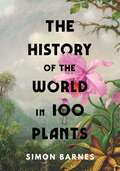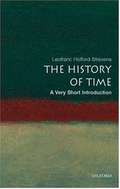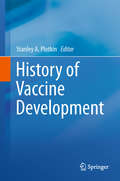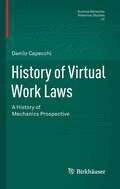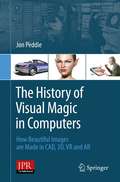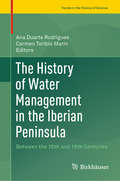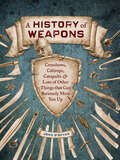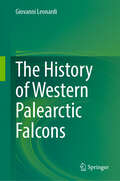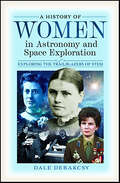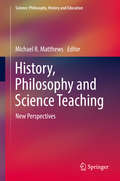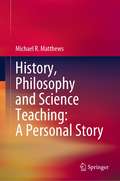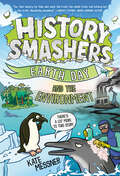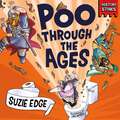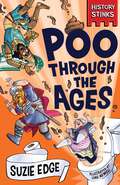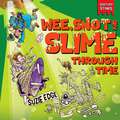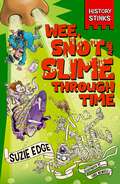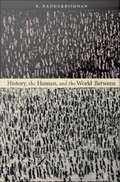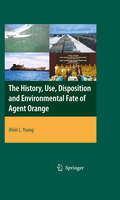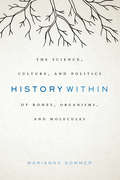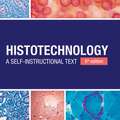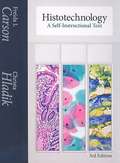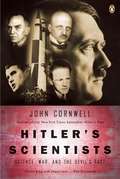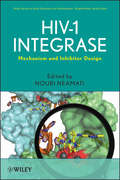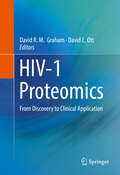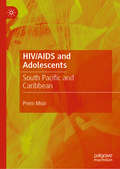- Table View
- List View
The History of the World in 100 Plants
by Simon BarnesFrom the author of The History of the World in 100 Animals, a BBC Radio Four Book of the Week, comes an inspirational new book that looks at the 100 plants that have had the greatest impact on humanity, stunningly illustrated throughout. As humans, we hold the planet in the palms of ours hands. But we still consume the energy of the sun in the form of food. The sun is available for consumption because of plants. Plants make food from the sun by the process of photosynthesis; nothing else in the world can do this. We eat plants, or we do so at second hand, by eating the eaters of plants. Plants give us food. Plants take in carbon dioxide and push out oxygen: they give us the air we breathe, direct the rain that falls and moderate the climate. Plants also give us shelter, beauty, comfort, meaning, buildings, boats, containers, musical instruments, medicines and religious symbols. We use flowers for love, we use flowers for death. The fossils of plants power our industries and our transport. Across history we have used plants to store knowledge, to kill, to fuel wars, to change our state of consciousness, to indicate our status. The first gun was a plant, we got fire from plants, we have enslaved people for the sake of plants. We humans like to see ourselves as a species that has risen above the animal kingdom, doing what we will with the world. But we couldn&’t live for a day without plants. Our past is all about plants, our present is all tied up with plants; and without plants there is no future. From the mighty oak to algae, from cotton to coca here are a hundred reasons why.
The History of Time: A Very Short Introduction
by Leofranc Holford-StrevensWhy do we measure time in the way that we do? Why is a week seven days long? At what point did minutes and seconds come into being? Why are some calendars lunar and some solar? The organisation of time into hours, days, months and years seems immutable and universal, but is actually far more artificial than most people realise. The French Revolution resulted in a restructuring of the French calendar, and the Soviet Union experimented with five and then six-day weeks. Leofranc Holford-Strevens explores these questions using a range of fascinating examples from Ancient Rome and Julius Caesar's imposition of the Leap Year, to the 1920s' project for a fixed Easter.
History of Vaccine Development
by Stanley A. PlotkinVaccinology, the concept of a science ranging from the study of immunology to the development and distribution of vaccines, was a word invented by Jonas Salk. This book covers the history of the methodological progress in vaccine development and to the social and ethical issues raised by vaccination. Chapters include "Jenner and the Vaccination against Smallpox," "Viral Vaccines," and "Ethical and Social Aspects of vaccines." Contributing authors include pioneers in the field, such as Samuel L. Katz and Hilary Koprowski. This history of vaccines is relatively short and many of its protagonists are still alive. This book was written by some of the chief actors in the drama whose subject matter is the conquest of epidemic disease.
History of Virtual Work Laws
by Danilo CapecchiThe book presents a history of classical mechanics by focusing on issues of equilibrium. The historical point of view adopted here restricts attention to cases where the effectiveness of forces is assessed on the basis of the virtual motion of their points of application. For completeness, hints of the alternative approach are also referred, the Archimedean for ancient mechanics and the Newtonian for modern mechanics. The laws resulting from consideration of virtual motions are named laws of virtual work. The modern formulations of the principle of virtual work are only a particular form of them. The book begins with the first documented formulations of laws of virtual work in the IV century BC in Greece and proceeds to the end of the XIX century AD in Europe. A significant space is devoted to Arabic and Latin mechanics of Middle Ages. With the Renaissance it began to appear slightly different wordings of the laws, which were often proposed as unique principles of statics. The process reached its apex with Bernoulli and Lagrange in the XVIII century. The book ends with some chapters dealing with the discussions that took place in the French school on the role of the Lagrangian version of the law of virtual work and its applications to continuum mechanics.
The History of Visual Magic in Computers
by Jon PeddieIf you have ever looked at a fantastic adventure or science fiction movie, or an amazingly complex and rich computer game, or a TV commercial where cars or gas pumps or biscuits behaved liked people and wondered, "How do they do that?", then you've experienced the magic of 3D worlds generated by a computer. 3D in computers began as a way to represent automotive designs and illustrate the construction of molecules. 3D graphics use evolved to visualizations of simulated data and artistic representations of imaginary worlds. In order to overcome the processing limitations of the computer, graphics had to exploit the characteristics of the eye and brain, and develop visual tricks to simulate realism. The goal is to create graphics images that will overcome the visual cues that cause disbelief and tell the viewer this is not real. Thousands of people over thousands of years have developed the building blocks and made the discoveries in mathematics and science to make such 3D magic possible, and The History of Visual Magic in Computers is dedicated to all of them and tells a little of their story. It traces the earliest understanding of 3D and then foundational mathematics to explain and construct 3D; from mechanical computers up to today's tablets. Several of the amazing computer graphics algorithms and tricks came of periods where eruptions of new ideas and techniques seem to occur all at once. Applications emerged as the fundamentals of how to draw lines and create realistic images were better understood, leading to hardware 3D controllers that drive the display all the way to stereovision and virtual reality.
The History of Water Management in the Iberian Peninsula: Between the 16th and 19th Centuries (Trends in the History of Science)
by Ana Duarte Rodrigues Carmen Toribio MarínThis volume approaches the history of water in the Iberian Peninsula in a novel way, by linking it to the ongoing international debate on water crisis and solutions to overcome the lack of water in the Mediterranean.What water devices were found? What were the models for these devices? How were they distributed in the villas and monastic enclosures? What impact did hydraulic theoretical knowledge have on these water systems, and how could these systems impact on hydraulic technology? Guided by these questions, this book covers the history of water in the most significant cities, the role of water in landscape transformation, the irrigation systems and water devices in gardens and villas, and, lastly, the theoretical and educational background on water management and hydraulics in the Iberian Peninsula between the sixteenth and the nineteenth centuries.Historiography on water management in the territory that is today Spain has highlighted the region’s role as a mediator between the Islamic masters of water and the Christian world. The history of water in Portugal is less known, and it has been taken for granted that is similar to its neighbour. This book compares two countries that have the same historical roots and, therefore, many similar stories, but at the same time, offers insights into particular aspects of each country. It is recommended for scholars and researchers interested in any field of history of the early modern period and of the nineteenth century, as well as general readers interested in studies on the Iberian Peninsula, since it was the role model for many settlements in South America, Asia and Africa.
A History of Weapons: Crossbows, Caltrops, Catapults & Lots of Other Things that Can Seriously Mess You Up
by John O'Bryan“[A] menacingly illustrated book . . . nerdily gushes over the design and use of 130+ historical instruments of combat.” —ThrillistOne day a prehistoric guy picked up a rock and threw it at something. And the history of weapons began. Comedy writer and weapon nerd John O’Bryan relays the freaky highlights of man’s centuries-old obsession with weaponry. He hilariously explains the mace, the morning star, and the man catcher, while conveying factual information about each weapon: its history, uses, and badass potential. Looking through history’s highlights, readers will learn about Attila the Hun, Genghis Khan, and the “peaceful” Shaolin monks. This ultimate compendium of awesome weapons delivers all the surprisingly true details sure to impress anybody who’s ever made a gun with their fingers and said, “PEW-PEW-PEW!”“[A] comic breakdown of weaponry.” —Lost in a Supermarket
The History of Western Palearctic Falcons
by Giovanni LeonardiFalcons have been exploited by humans as food source, ornamental purposes or for the falconry practices. There is a large historical literature in which falcons were often mentioned but always along broader topics (mainly ancient falconry and poetry). This book is the result of a parallel project developed during the preparation of "Behavioral Ecology of Western Palearctic falcons" (published by Springer in 2020). The main aim is to use archaeological and historical sources on falcons to delineate the past distribution and population ecology of these predators in the Western Palearctic ecozone. Ultimately, the approach to the data is aimed at defining the population dynamics of falcons over time. The relationship/conflict with human populations is also placed in this context. By putting falcons as a central subject of study, this book outlines their path in the Western Palearctic from the Pleistocene to modern ornithology.
A History of Women in Astronomy and Space Exploration: Exploring the Trailblazers of STEM
by Dale DeBakcsyFor the last four hundred years, women have played a part far in excess of their numerical representation in the history of astronomical research and discovery. It was a woman who gave us our first tool for measuring the distances between stars, and another who told us for the first time what those stars were made of. It was women who first noticed the rhythmic noise of a pulsar, the temperature discrepancy that announced the existence of white dwarf stars, and the irregularities in galactic motion that informed us that the universe we see might be only a small part of the universe that exists. And yet, in spite of the magnitude of their achievements, for centuries women were treated as essentially second class citizens within the astronomical community, contained in back rooms, forbidden from communicating with their male colleagues, provided with repetitive and menial tasks, and paid starvation wages. This book tells the tale of how, in spite of all those impediments, women managed, by sheer determination and genius, to unlock the secrets of the night sky. It is the story of some of science's most hallowed names - Maria Mitchell, Caroline Herschel, Vera Rubin, Nancy Grace Roman, and Jocelyn Bell-Burnell - and also the story of scientists whose accomplishments were great, but whose names have faded through lack of use - Queen Seondeok of Korea, who built an observatory in the 7th century that still stands today, Wang Zhenyi, who brought heliocentrism to China, Margaret Huggins, who perfected the techniques that allowed us to photograph stellar spectra and thereby completely changed the direction of modern astronomy, and Hisako Koyama, whose multi-decade study of the sun's surface is as impressive a feat of steadfast scientific dedication as it is a rigorous and valuable treasure trove of solar data. A History of Women in Astronomy and Space Exploration is not only a book, however, of those who study space, but of those who have ventured into it, from the fabled Mercury 13, whose attempt to join the American space program was ultimately foiled by betrayal from within, to mythical figures like Kathryn Sullivan and Sally Ride, who were not only pioneering space explorers, but scientific researchers and engineers in their own rights, aided in their work by scientists like Mamta Patel Nagaraja, who studied the effects of space upon the human body, and computer programmers like Marianne Dyson, whose simulations prepared astronauts for every possible catastrophe that can occur in space. Told through over 130 stories spanning four thousand years of humanity's attempt to understand its place in the cosmos, A History of Women in Astronomy and Space Exploration brings us at last the full tale of women's evolution from instrument makers and calculators to the theorists, administrators, and explorers who have, while receiving astonishingly little in return, given us, quite literally, the universe.
History, Philosophy and Science Teaching
by Michael R. MatthewsProduced by the Ontario Institute for Studies in Education, this inaugural volume in a new series contains 17 articles (most previously published) by historians, philosophers, psychologists, natural scientists, and science educators who advocate the teaching of science from a broader view in order to improve students' perception of the discipline, increase the development of critical skills, and retain a greater number of students in the field. Annotation copyrighted by Book News, Inc. , Portland, OR
History, Philosophy and Science Teaching: A Personal Story
by Michael R. MatthewsThis book is an historical narrative of academic appointments, significant personal and collaborative research endeavours, and important editorial and institutional engagements. For forty years Michael Matthews has been a prominent international researcher, author, editor and organiser in the field of ‘History, Philosophy and Science Teaching’. He has systematically brought his own discipline training in science, psychology, philosophy of education, and the history and philosophy of science, to bear upon theoretical, curricular and pedagogical issues in science education. The book includes accounts of philosophers who greatly influenced his own thinking and who also were personal friends – Wallis Suchting, Abner Shimony, Robert Cohen, Marx Wartofsky, Israel Scheffler, Michael Martin and Mario Bunge. It advocates the importance of clear writing and avoidance of faddism in both philosophy and in education. It concludes with a proposal for informed and enlightened science teacher education.
History Smashers: Earth Day and the Environment (History Smashers)
by Kate MessnerMyths! Lies! Recycling scams? Discover the real story behind the first Earth Day celebration and some of the biggest US climate catastrophes--and their solutions! Don't miss the award-winning History Smashers series as they get to the truth on the biggest environmental fibs!In April 1970, twenty million people grabbed their rakes, gloves, and recycling bins to celebrate the first Earth Day. Since that environmental kickoff, nature has never been in better shape. RIGHT?WRONG! The real deal is a bit muddier than that. It&’s true that the first Earth Day encouraged people around the globe to clean up their act when it came to the environment. But activists have been working for centuries to save the planet! Native people across the world developed sustainable farming practices, women in eighteenth-century India stood up to protect trees, and amateur scientist Eunice Foote discovered the science behind global warming all the way back in the 1850s!Join the History Smashers team to bust history's biggest misconceptions and figure out what in the world really went down before (and after!) the first Earth Day—and how you can join the fight to protect the environment.Ready to bust new myths? Check out more titles in the History Smashers series: The Mayflower • Plagues & Pandemics • The Titanic • The Underground Railroad • The Salem Witch Trials
History Stinks!: Poo Through the Ages (History Stinks!)
by Suzie EdgeWhat's that smell? It's HISTORY - and it STINKS!Did you know that you can discover loads about history just from the loo? Or piles about the past just from a poo? If not, then get ready to discover everything from Henry VIII's dodgy diet and poo-tastic Roman plumbing, to the stinky secrets of Victorian sewers and how life, death and everything in between can hang on the humble number two.From Saxons and Tudors to Ancient Greece, the Indus Valley, Aztecs and beyond, Poo Through the Ages features mighty monarchs, bonkers battles, deadly diseases, fossilised faeces and poo, poo, poo. Packed with fascinating facts, hilarious illustrations and the smelliest stories from our pongy past, get ready to dive into the smelliest corners of history!
History Stinks!: Poo Through the Ages (History Stinks!)
by Suzie EdgeWhat's that smell? It's HISTORY - and it STINKS!Did you know that you can discover loads about history just from the loo? Or piles about the past just from a poo? If not, then get ready to discover everything from Henry VIII's dodgy diet and Aztec poop canoes to giant, fossilizsed Viking plops, poo-tastic Roman plumbing, the stinky secrets of Victorian sewers, smelly cesspits, medieval muck and more.From Saxons and Tudors to ancient Greece, the Indus Valley and beyond, Poo Through the Ages features mighty monarchs, bonkers battles, deadly diseases, foul-smelling faeces and poo, poo, poo. Packed with fascinating facts, hilarious illustrations and the smelliest stories from our pongy past, get ready to dive into the smelliest corners of history!
History Stinks!: Wee, Snot and Slime Through Time (History Stinks! #2)
by Suzie EdgeWhat's that smell? It's HISTORY - and it STILL STINKS!Did you know that ancient Romans used wee as mouthwash? GROSS! Or that snot was behind some of history's greatest discoveries? HUH?From French kings with boils on their bums to Victorians who liked to catch tears in special bottles, Wee, Snot and Slime Through Time features deadly battlefield diseases, disgusting dukes, beastly bacteria and slimy stories from the Egyptians to the Tudors and beyond.Packed with fascinating facts, hilarious illustrations and the snottiest, wee-tastic tales from our pongy past, get ready to be dunked into the foulest corners of history.
History Stinks!: Wee, Snot and Slime Through Time (History Stinks! #2)
by Suzie EdgeWhat's that smell? It's HISTORY - and it STILL STINKS!Did you know that ancient Romans used wee as mouthwash? GROSS! Or that snot was behind some of history's greatest discoveries? HUH?From French kings with boils on their bums to Victorians who liked to catch tears in special bottles, Wee, Snot and Slime Through Time features deadly battlefield diseases, disgusting dukes, beastly bacteria and slimy stories from the Egyptians to the Tudors and beyond.Packed with fascinating facts, hilarious illustrations and the snottiest, wee-tastic tales from our pongy past, get ready to be dunked into the foulest corners of history.
History, the Human, and the World Between
by R. RadhakrishnanHistory, the Human, and the World Between is a philosophical investigation of the human subject and its simultaneous implication in multiple and often contradictory ways of knowing. The eminent postcolonial theorist R. Radhakrishnan argues that human subjectivity is always constituted "between": between subjective and objective, temporality and historicity, being and knowing, the ethical and the political, nature and culture, the one and the many, identity and difference, experience and system. In this major study, he suggests that a reconstituted phenomenology has a crucial role to play in mediating between generic modes of knowledge production and an experiential return to life. Keenly appreciative of poststructuralist critiques of phenomenology, Radhakrishnan argues that there is still something profoundly vulnerable at stake in the practice of phenomenology. Radhakrishnan develops his rationale of the "between" through three linked essays where he locates the terms "world," "history," "human," and "subject" between phenomenology and poststructuralism, and in the process sets forth a nuanced reading of the politics of a gendered postcolonial humanism. Critically juxtaposing the works of thinkers such as Friedrich Nietzsche, Adrienne Rich, Frantz Fanon, Edward Said, Michel Foucault, Maurice Merleau-Ponty, Martin Heidegger, David Harvey, and Ranajit Guha, Radhakrishnan examines the relationship between systems of thought and their worldly situations. History, the Human, and the World Between is a powerful argument for a theoretical perspective that combines the existential urgency of phenomenology with the discursive rigor of poststructuralist practices.
The History, Use, Disposition and Environmental Fate of Agent Orange
by Alvin Lee YoungFor almost four decades, controversy has surrounded the tactical use of herbicides in Southeast Asia by the United States military. Few environmental or occupational health issues have received the sustained international attention that has been focused on Agent Orange, the major tactical herbicide deployed in Southern Vietnam. With the opening and establishment of normal relations between the United States and the Socialist Republic of Vietnam in 1995, the time has come for a thorough re-examination of the military use of Agent Orange and other "tactical herbicides" in Southern Vietnam, and the subsequent actions that have been taking place since their use in Vietnam. The United States Department of Defense has had the major role in all military operations involving the use of tactical herbicides, including that of Agent Orange. This included the Department's purchase, shipment and tactical use of herbicides in Vietnam, its role in the disposition of Agent Orange after Vietnam, its role in conducting long-term epidemiological investigations of the men of Operation RANCH HAND, and its sponsorship of ecological and environmental fate studies. This book was commissioned by The Office of the Deputy Under Secretary of Defense (Installations and Environment) with the intent of providing documentation of the knowledge on the history, use, disposition and environmental fate of Agent Orange and its associated dioxin.
History Within: The Science, Culture, and Politics of Bones, Organisms, and Molecules
by Marianne SommerPersonal genomics services such as 23andMe and Ancestry.com now offer what once was science fiction: the ability to sequence and analyze an individual's entire genetic code--promising, in some cases, facts about that individual's ancestry that may have remained otherwise lost. Such services draw on and contribute to the science of human population genetics that attempts to reconstruct the history of humankind, including the origin and movement of specific populations. Is it true, though, that who we are and where we come from is written into the sequence of our genomes? Are genes better documents for determining our histories and identities than fossils or other historical sources? Our interpretation of gene sequences, like our interpretation of other historical evidence, inevitably tells a story laden with political and moral values. Focusing on the work of Henry Fairfield Osborn, Julian Sorell Huxley, and Luigi Luca Cavalli-Sforza in paleoanthropology, evolutionary biology, and human population genetics, History Within asks how the sciences of human origins, whether through the museum, the zoo, or the genetics lab, have shaped our idea of what it means to be human. How have these biologically based histories influenced our ideas about nature, society, and culture? As Marianne Sommer shows, the stories we tell about bones, organisms, and molecules often change the world.
Histotechnology: A Self-Instructional Text
by Freida L Carson Christa CappellanoDr Carson returns with the thoroughly revised and expanded 5th edition of the perennial bestseller, Histotechnology: A Self-Instructional Text. Developed as a learning tool for histotechnology students, Histotechnology: A Self-Instructional Text 5e is also of immense value to practicing technicians, technologists, residents, and pathologists.
Histotechnology: A Self-instructional Text
by Freida L. Carson Christa HladikAn indispensable teaching tool and reference--and a "must" for histotechnologists preparing for the ASCP HTL certifying examination--Histotechnology has been completely updated in the new 3rd edition. New coverage includes chapters on immunohistochemistry and molecular techniques and cytopreparation. You'll also appreciate new features incorporated throughout the book--new images, how-to illustrations for manual techniques, troubleshooting aids, and additional special staining procedures.
Hitler's Scientists: Science, War and the Devil's Pact
by John CornwellIn a rich and fascinating history John Cornwell tells the epic story of Germany's scientists from the First World War to the collapse of Hitler's Reich. He shows how Germany became the world's Mecca for inventive genius, taking the lion's share of Nobel awards, before Hitler's regime hijacked science for wars of conquest and genocidal racism. Cornwell gives a dramatic account of the wide ranging Nazi research projects, from rockets to nuclear weapons; the pursuit of advanced technology for irrational ends, concluding with with penetrating relevance for today: the inherent dangers of science without conscience.
Hiv-1 Integrase
by Nouri NeamatiThis book comprehensively covers the mechanisms of action and inhibitor design for HIV-1 integrase. It serves as a resource for scientists facing challenging drug design issues and researchers in antiviral drug discovery. Despite numerous review articles and isolated book chapters dealing with HIV-1 integrase, there has not been a single source for those working to devise anti-AIDS drugs against this promising target. But this book fills that gap and offers a valuable introduction to the field for the interdisciplinary scientists who will need to work together to design drugs that target HIV-1 integrase.
HIV-1 Proteomics
by David R. M. Graham David E. OttThe development of proteomic analyses using advanced mass spectrometry techniques has revolutionized the way proteins are studied, namely, as individual molecules within a complex system. HIV-1 Proteomics: From Discovery to Clinical Application comprehensively covers protein analysis from the early classic experimental days to current state-of-the-art HIV-1 proteomics in a clear informative style that brings expert-level understanding to the novice. Discussion of important clinical applications and future directions for the field also make this an ideal read for the expert. After finishing this book, the reader will have a complete and functional understanding of protein analysis from traditional biochemistry to modern proteomics.
HIV/AIDS and Adolescents: South Pacific and Caribbean
by Prem MisirThis book addresses the relationship between high school students’ HIV and AIDS knowledge and their stigma-related attitudes/perceptions of people living with HIV (PLHIV) in the Caribbean and South Pacific, with a view to designing effective stigma-reduction combined intervention programs. Presenting an international cross-sectional study using a purposive sample of high school students from Fiji (South Pacific), Vanuatu (South Pacific), Guyana, and Antigua & Barbuda (Caribbean) to assess HIV and AIDS knowledge and stigma-related attitudes by gender, age, religion, race/ethnicity, and socioeconomic status, the book shows how stigmatizing attitudes and beliefs negatively impact interventions to prevent and treat HIV and AIDS.
